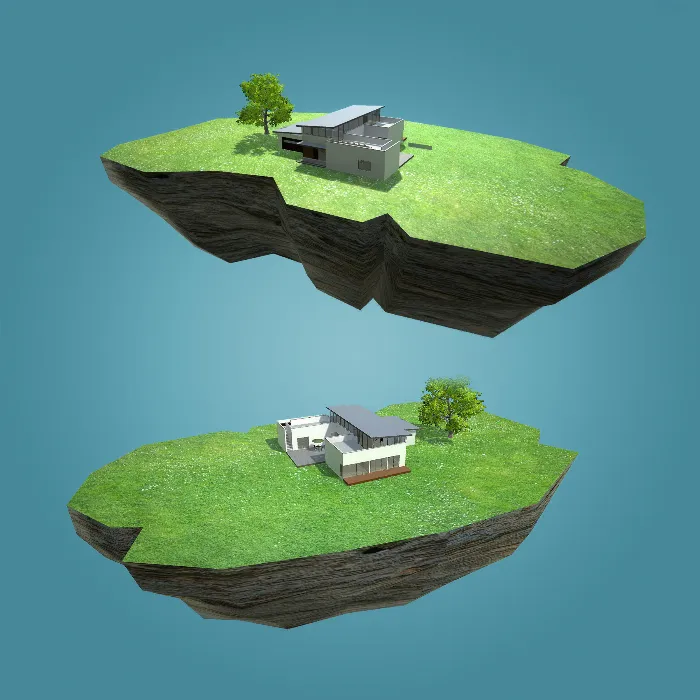It is time to take your project to the next level. If you are working with Unity and Cinema 4D, you may encounter the challenge of adding visual appeal to your scene. There is an effective method to achieve a gradient as a background effect. Instead of using scripts, we will explore the diverse Camera Effects that will help you achieve impressive results. In this guide, you will learn step by step how to utilize different optical effects in Unity to give your architectural-visualizations more depth and style.
Key Insights
- It is possible to implement visual effects without scripts in Unity.
- Importing Image Effects from the Standard Assets opens up new design possibilities for you.
- Different camera effects such as vignetting, depth of field, and bloom can be combined to optimize your scene.
Step-by-Step Guide
To give your architectural scene the desired visual touch, follow these steps:
First, select your Main Camera in Unity. You can access it by simply clicking on the camera object in the Hierarchy window. Here, you will see the background currently set. You can change this setting by clicking on the Clear Flags property and selecting Solid Color. If all goes well, you should now see the background color you have set.
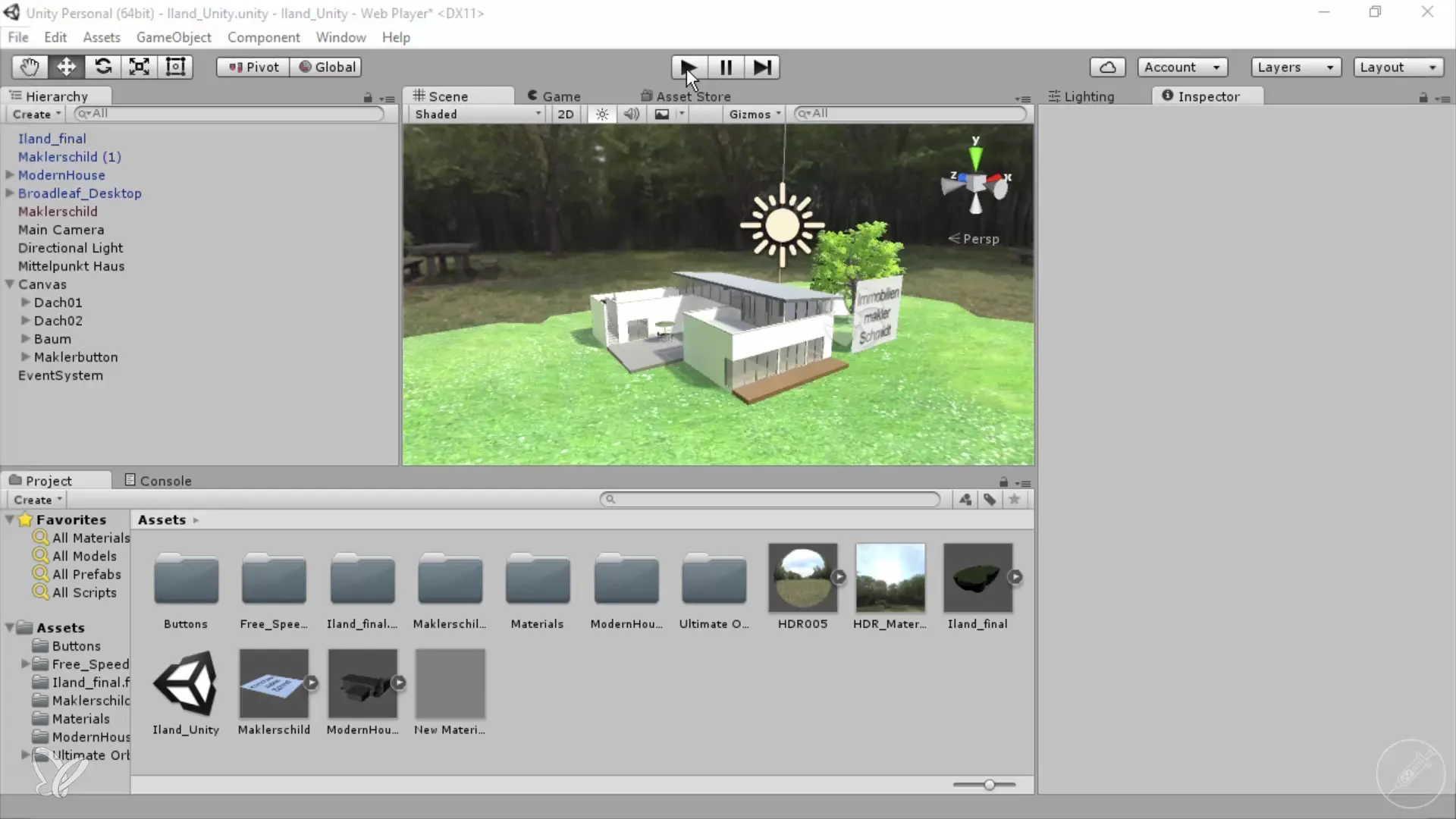
However, now you want to implement a gradient to create a more interesting visual effect. This may seem impossible at first glance, as you would normally need to use scripts or resort to a plugin from the Asset Store. You might consider searching for a free Gradient Maker or trying out various plugins.
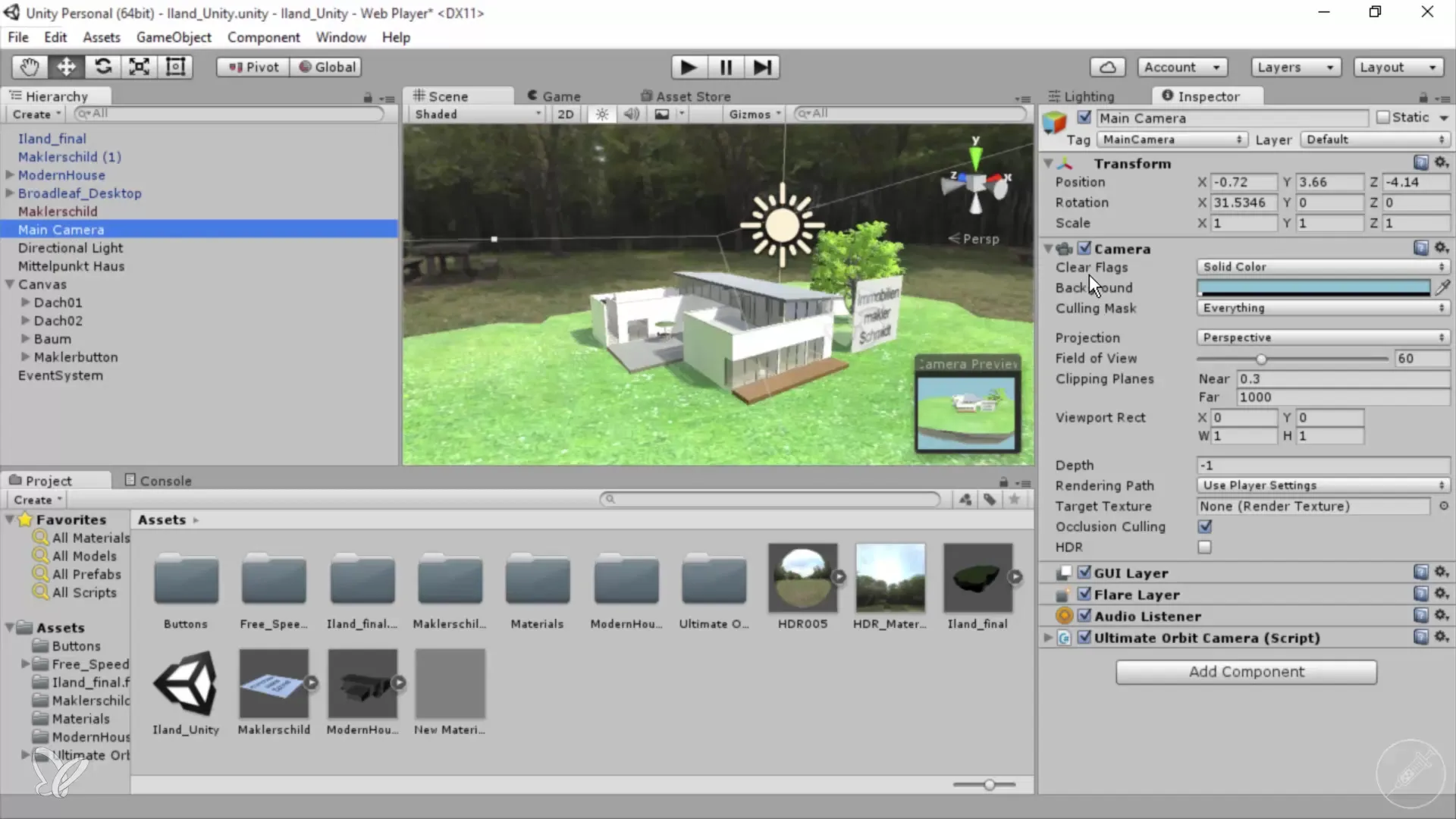
Nevertheless, there is also an alternative solution directly in Unity. Here, effects are added via the camera components. It is required to apply an effect script to the camera. To find these effects, go to "Assets" and then to "Import Packages". Here, you select "Effects". The import process may take some time, but it gives you access to valuable graphic effects.
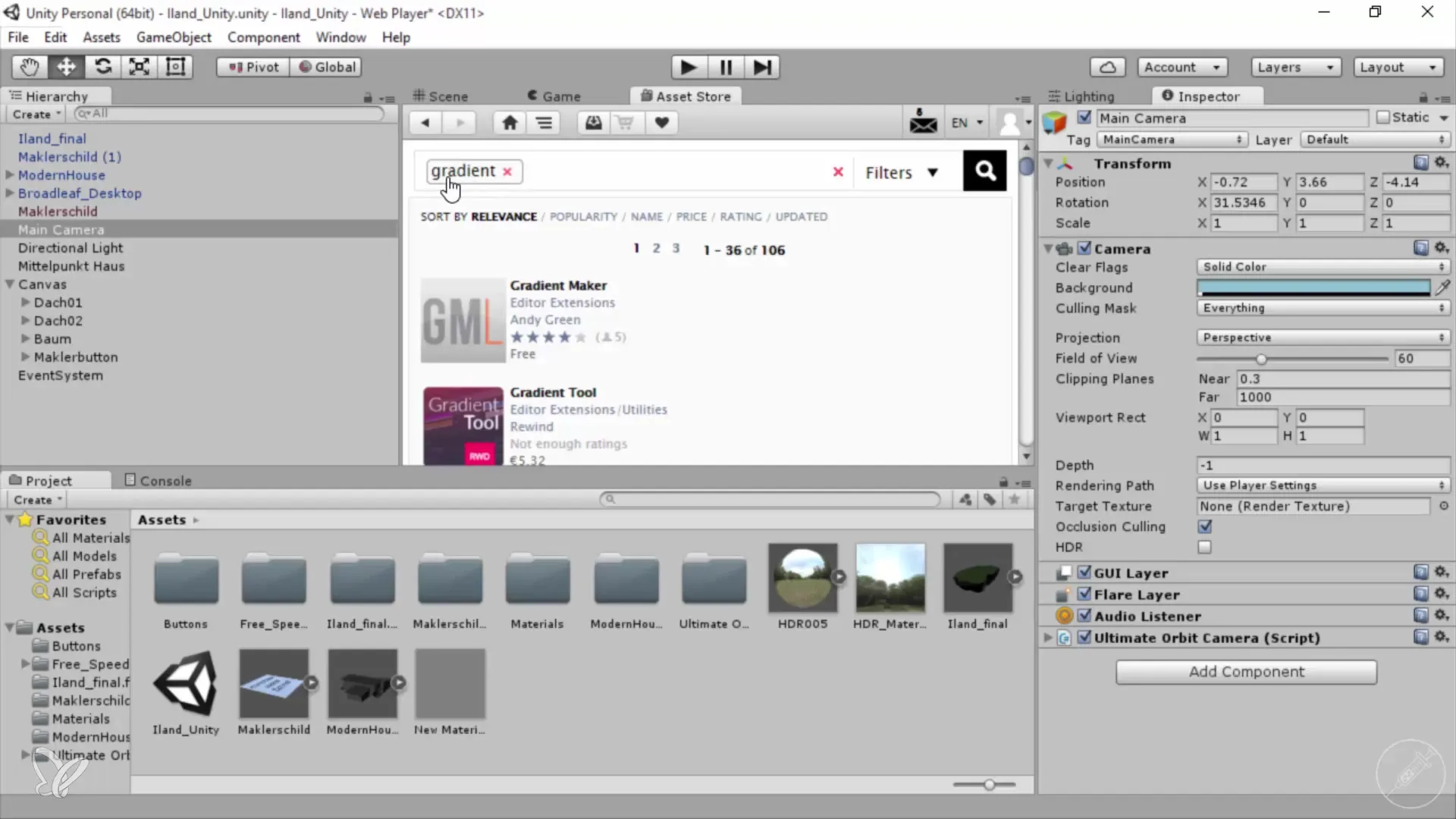
Once the import is complete, you will find the new effects under the Standard Assets folder. The new folder "Image Effects" is particularly helpful. It contains the various scripts you can use, including vignetting and depth of field, which are especially beneficial for architectural visualizations.
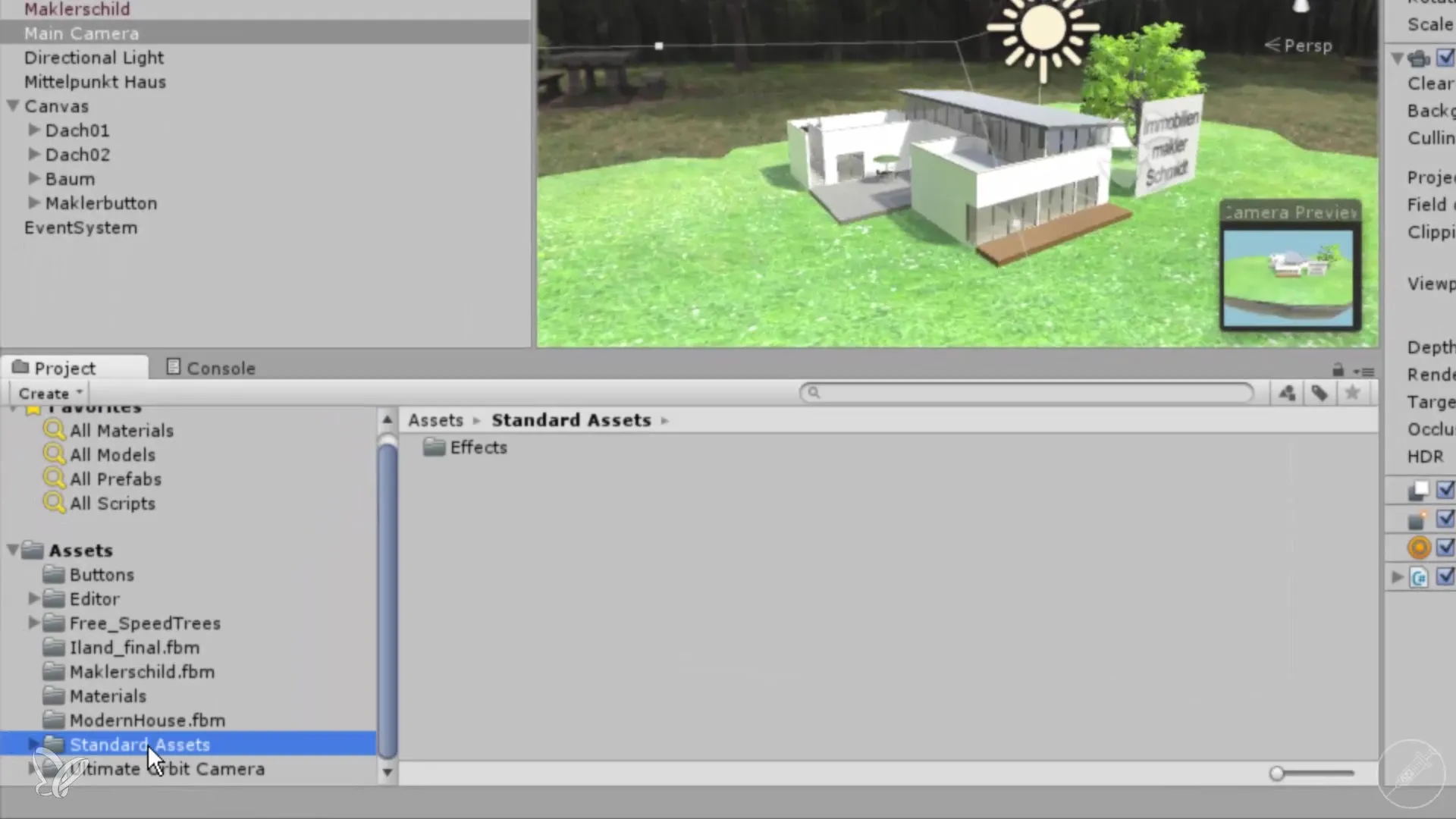
Select your camera again and simply drag the desired effects, such as the vignetting effect, onto your camera. After this simple action, you can click on Play right away and observe how the scene has changed. The result should already provide a remarkable visual impression.
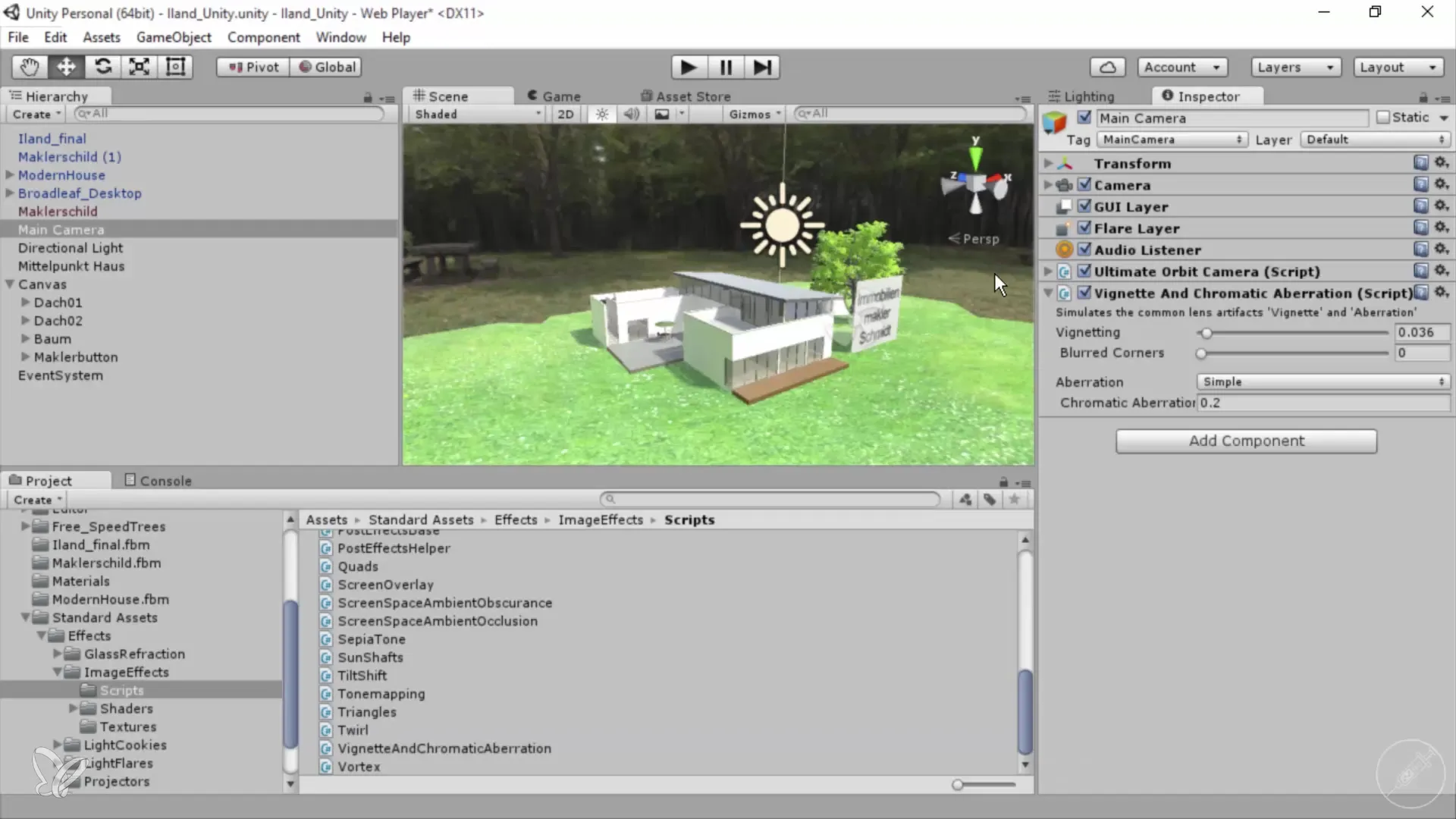
To test another effect, you can add Depth of Field. Again, select the camera and drag the Depth of Field script onto it. If you press Play now, you will notice that the depth of field significantly enhances the scene.
You also have the option to experiment with the settings of the Depth of Field effect. You can focus on specific objects to achieve the desired blur. Here, the Focal Size plays a crucial role. Experiment with this parameter to achieve the desired effect.
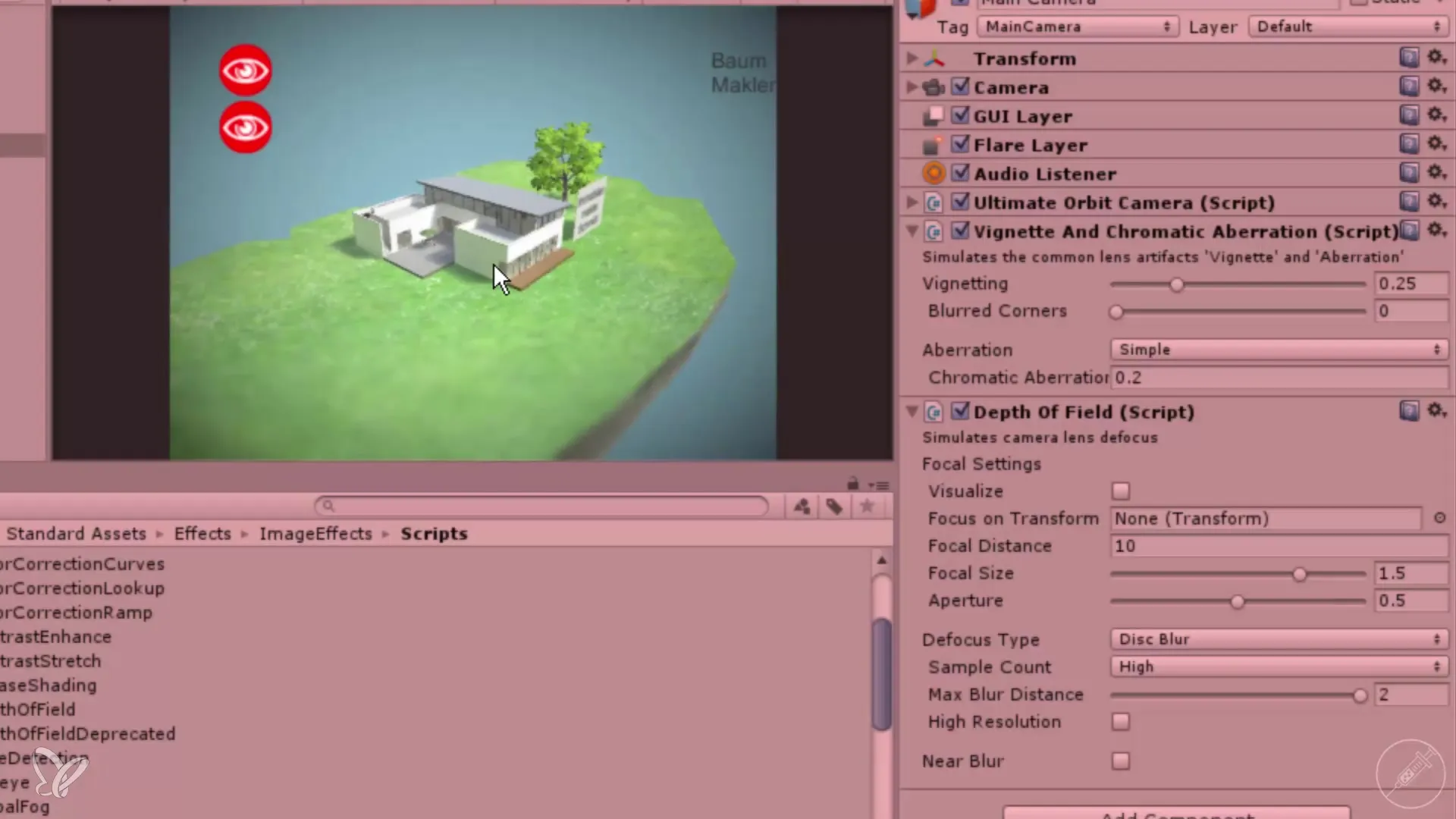
Another step would be to add a bloom effect. Again, drag the corresponding script onto the camera and observe the changes. If the effect appears too strong, you can adjust the intensity to achieve a more appealing result.
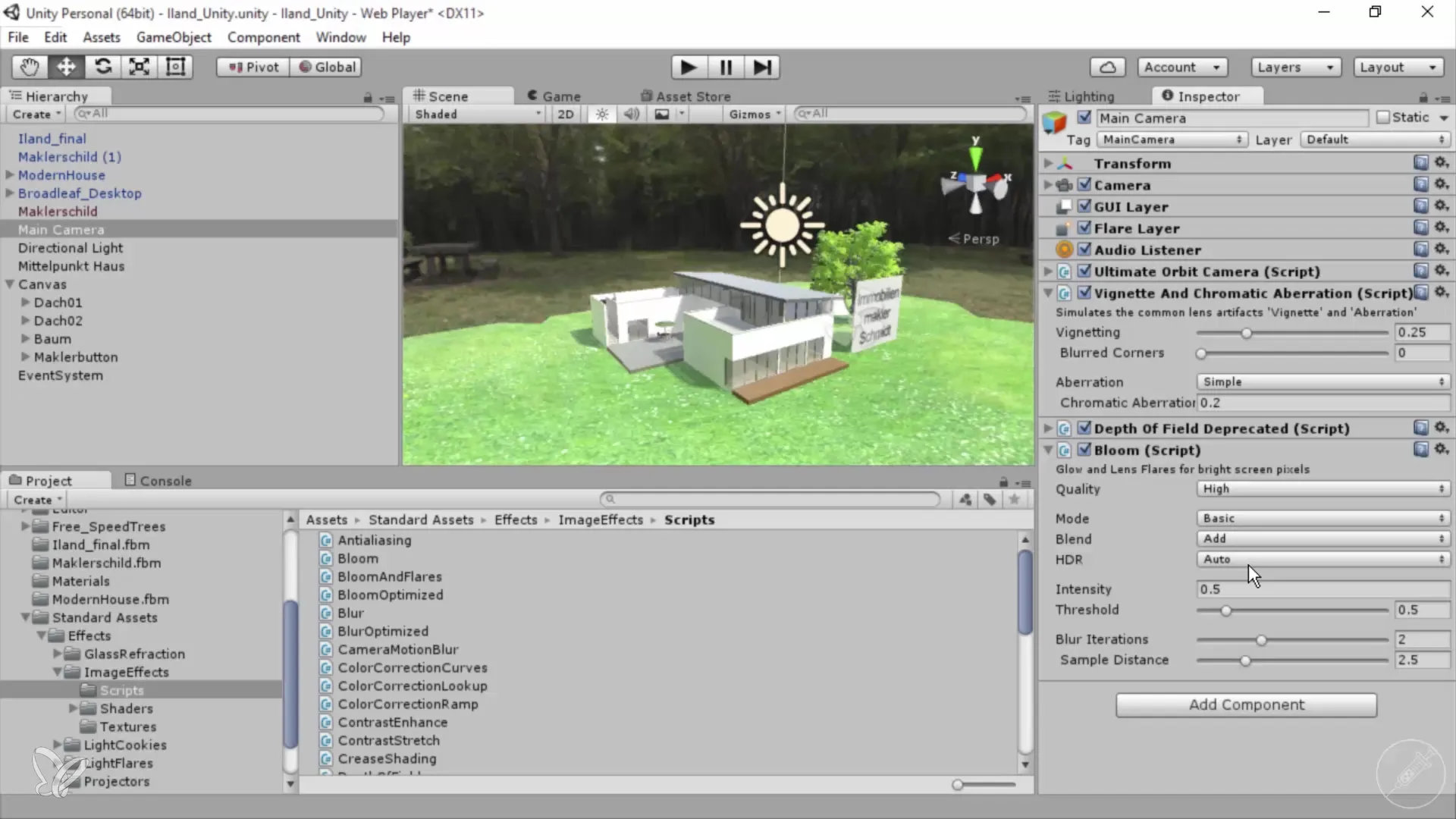
Before exporting your project, make sure that the overall balance of the scene is correct. You can adjust the lighting conditions and optimize the background objects to ensure everything appears harmonious.
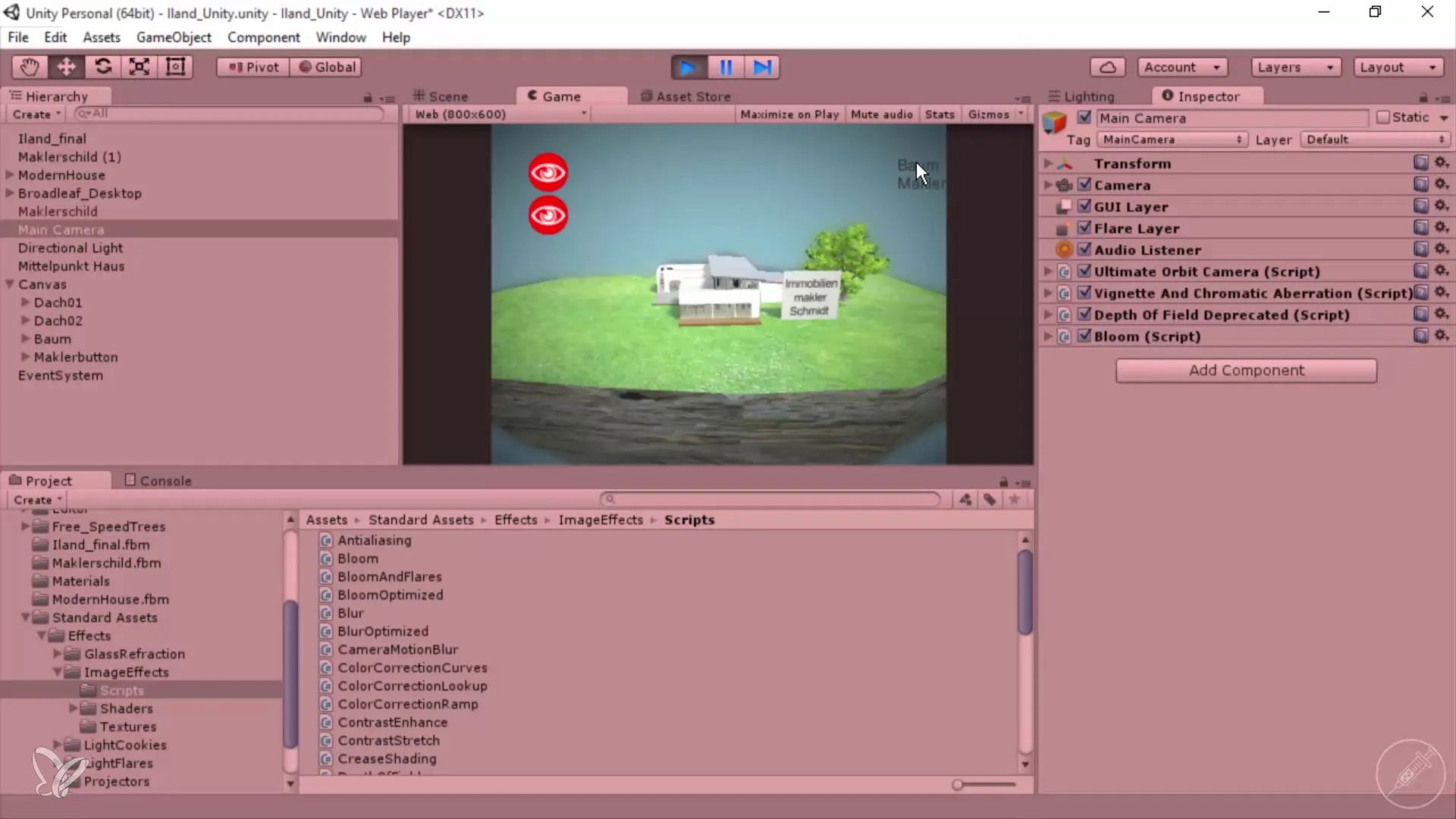
Summary - 360° Architecture Views with Unity and Cinema 4D – Effectively Adding Camera Effects
This guide shows you how to add impressive visual elements to your architectural visualizations using camera effects in Unity and Cinema 4D. By combining effects such as vignetting, depth of field, and bloom, you can significantly enhance the quality of your projects.
Frequently Asked Questions
How do I add camera effects in Unity?Camera effects are added by selecting the Main Camera and dragging the desired effect scripts from the Image Effects folder onto it.
Do I need to use scripts to create gradients?No, you can add gradients using the camera effects in Unity without using scripts.
Where can I find the Image Effects in Unity?You can find the Image Effects under "Standard Assets" in the "Effects" folder after importing the packages.
Can I adjust the intensity of effects in Unity?Yes, you can control the intensity and other parameters of the effects in the camera properties.
Are there free plugins for Unity?Yes, you can find free plugins like the Gradient Maker in the Asset Store to try out.
